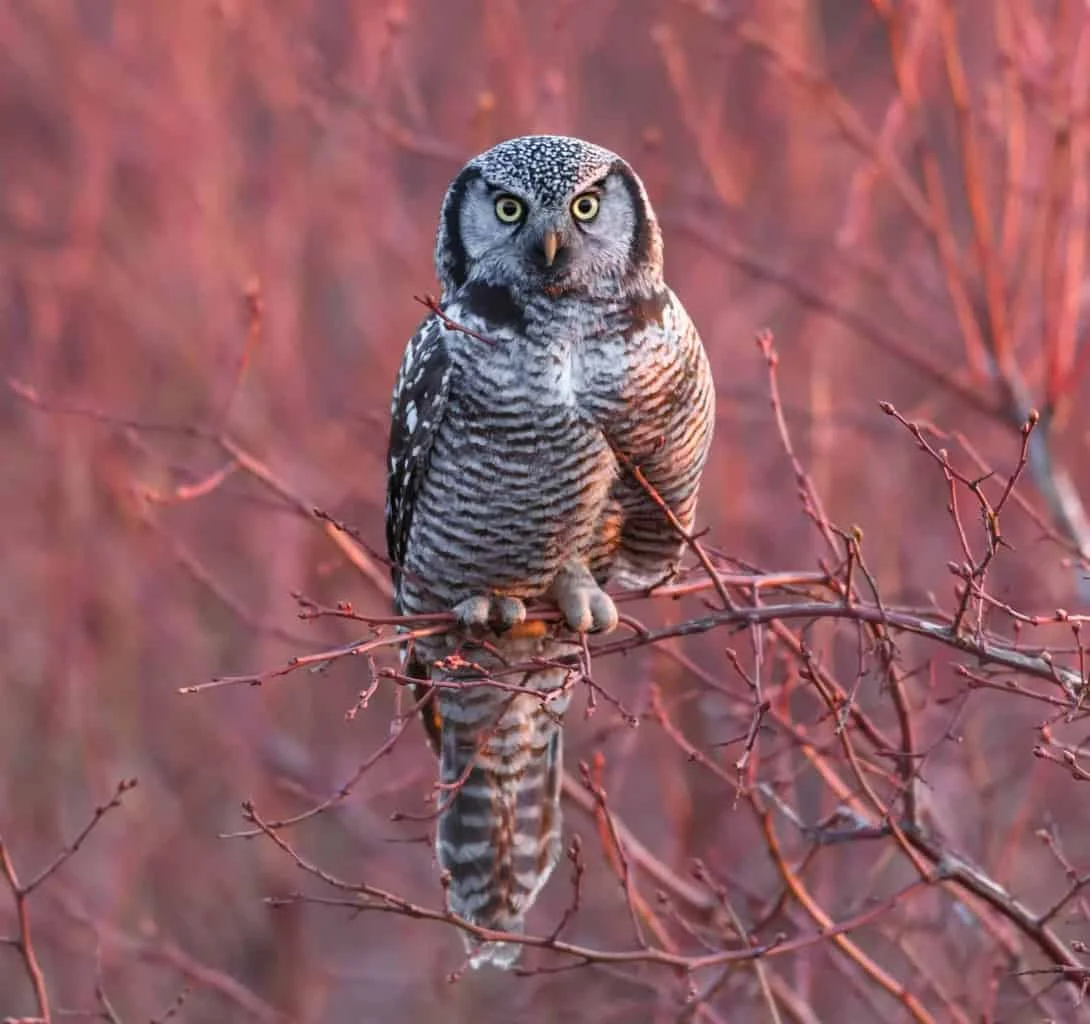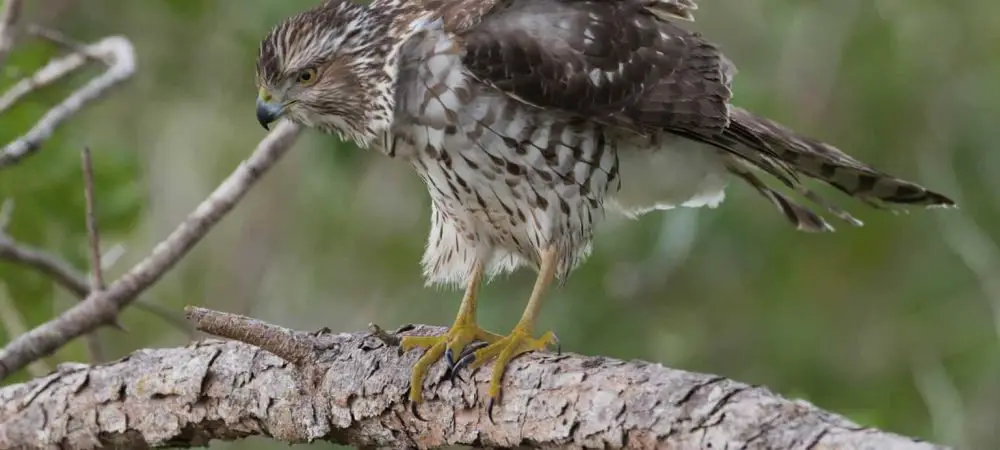
Want to learn more? This book on the Birds of Prey of North America is a fantastic read!
Nebraska resides in the heart of America, mostly in a region appropriately called The Great Planes.
Ironically, much of the “tree planter state” is flat grassland devoid of any noteworthy forest, which makes one wonder how well a treetop hunter would fare in such a place.
This article seeks to answer that question, by identifying the most common hawks found in the state of Nebraska, with information about where and when you can spot one.
Want to attract birds of prey to your yard? Take a look at our article!
What Hawks can be seen in Nebraska?
Table of Contents
1. Sharp-Shinned Hawk
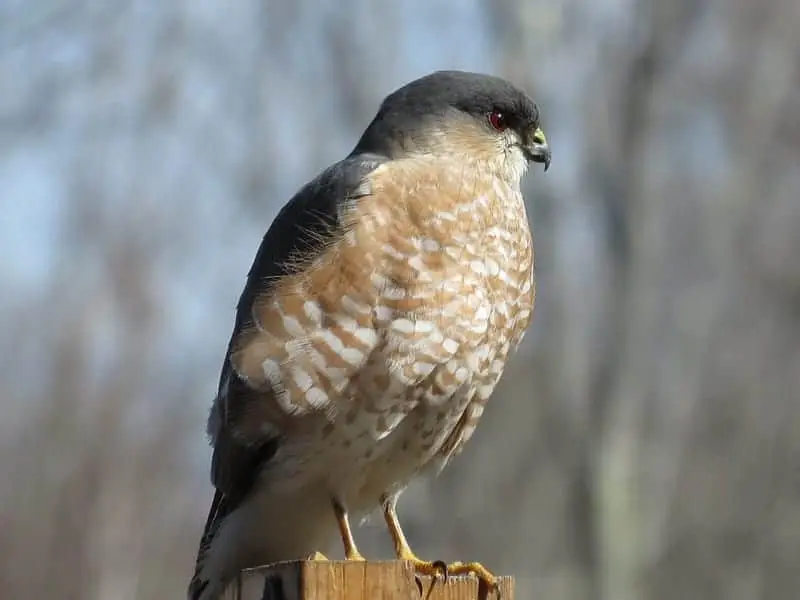
“Sharp-Shinned Hawk” by ‘Dennis Murhpy‘ is licensed under CC BY 2.0
Frank Lambert, XC274807. Accessible at www.xeno-canto.org/274807.
Wingspan
43-56cm
Weight
87-218g
Life Expectancy
3 years
Diet
Robins and Thrushes
These raptors are spring and travellers, setting in various places throughout the state in the winter seeking the best source of food to hold them over.
It frequents eastern areas like the Missouri River Valley where prey is abundant, but the sharp-shinned hawk is not opposed to snatching other birds from feeders in your backyard.
They are very similar to their larger cousin the Cooper’s hawk in appearance, with dark bluish-grey wings and crown, and a pale underside with light-brown markings.
2. Cooper’s Hawk
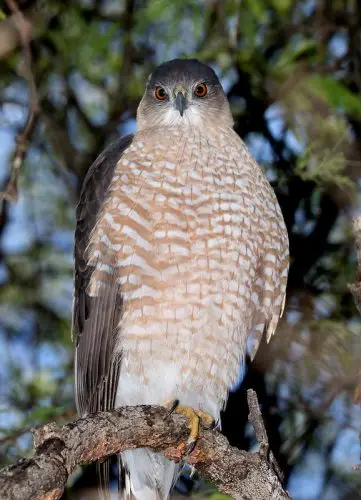
Sue Riffe, XC611811. Accessible at www.xeno-canto.org/611811.
Wingspan
62-90cm
Weight
330-680g
Life Expectancy
Up to 12 years
Diet
Small Birds, Mice & Squirrels
This is another of Nebraska’s raptors that like to hunt near riparian areas near streams and rivers, remaining in the pine trees of Nebraska’s scattered forests in spring and summer.
Like the sharp-shinned and red-tail hawks, this bird has no qualms about moving in on civilization and taking food from backyards and roadsides.
The Cooper’s hawk can be distinguished from its sharp-shinned twin by its size, as it is the much larger bird of the two.
Else, the Cooper’s has similar dark backside and light underside with brownish markings, except with generally less pronounced coloring on the crown.
3. Northern Goshawk
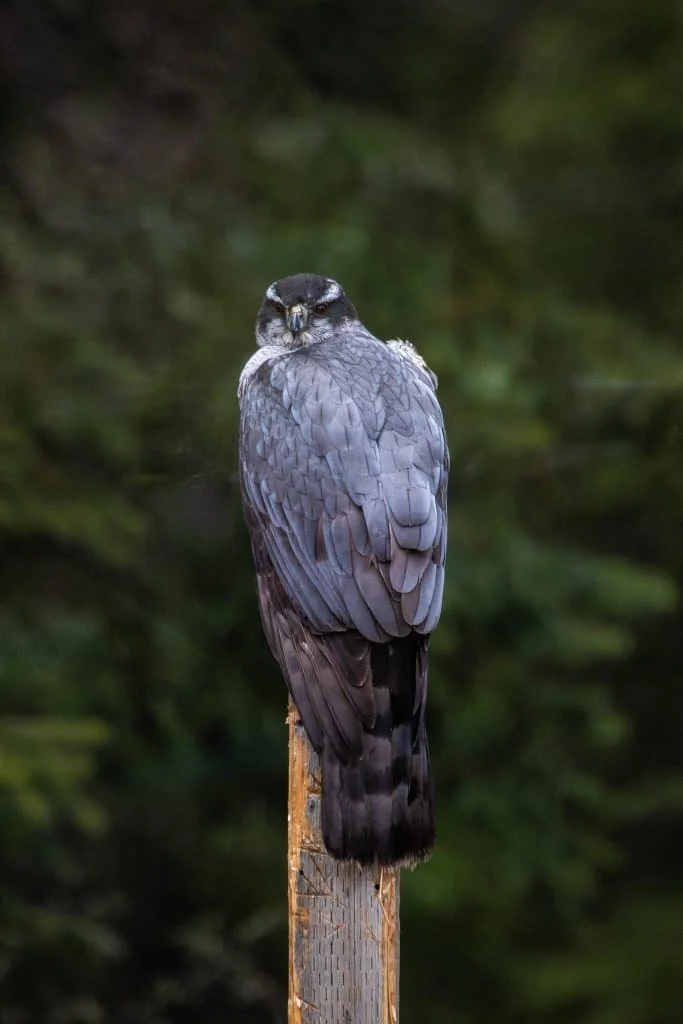
Peter Stronach, XC623479. Accessible at www.xeno-canto.org/623479.
Wingspan
89-127cm
Weight
631-1364g
Life Expectancy
7 Years
Diet
Mammals, reptiles & insects
The goshawk is a peculiar raptor who takes a lot of its personality from other birds. At a glance, the black mask and sleek grayish frame might give the impression it’s a much larger songbird, especially as it weaves between trees in spite of its wingspan.
Fortunately, the speckled patterns on their chests and wings stand out, as does the northern goshawk’s long round tail with its white stripes.
Their migration patterns are even more strange, as the settled adults will remain at their places of origin through winter while their ‘juveniles’ migrate to Nebraska and surrounding states.
4. Red-Shouldered Hawk
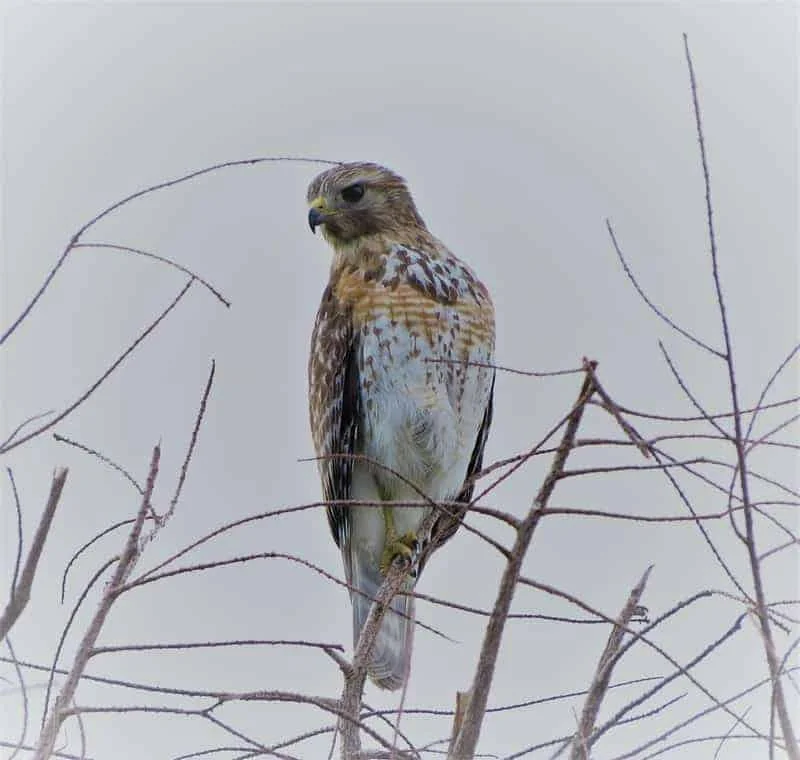
Christopher McPherson, XC602509. Accessible at www.xeno-canto.org/602509.
Wingspan
94-111cm
Weight
486g-774g
Life Expectancy
2 years
Diet
Small mammals, reptiles & amphibians
In Nebraska, the red-shouldered hawk hangs out in places like Fontenelle Forest, where abundance of tree top cover and small wildlife are good for nesting and hunting.
They are attracted to floodplains near the forest’s edge.
Unsurprisingly, this hawk is most easily identified by the gathering of reddish feathers on its ‘shoulders’, where the wings meet the body.
The rest of its plumage varies from pale to light brown on the underside, with a slightly darker backside (gray to brown), and wings that are usually even darker with white stripes toward the tips.
The red-shouldered hawk is a bit of a loner compared to the slightly more domesticated hawks, remaining in the high places among the trees until it is time to strike.
They can also be identified by their distinctive call, which many say sounds a lot like a Blue Jay’s.
5. Broad-Winged Hawk
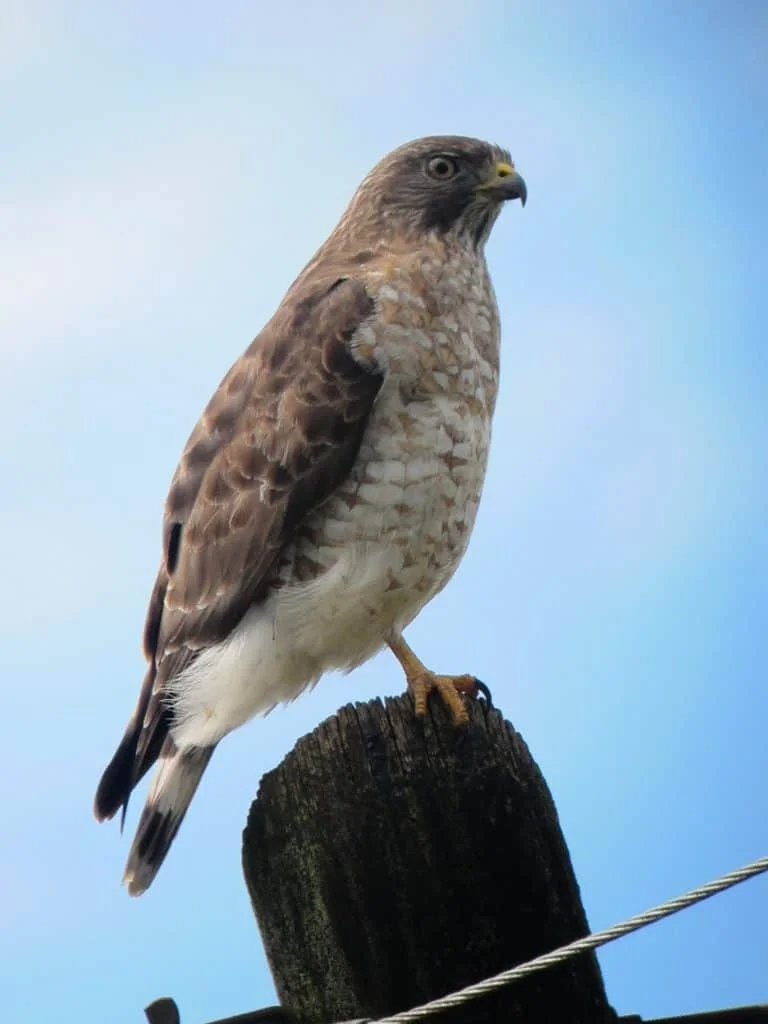
“Broad Winged Hawk” by ‘Felipe Uribe‘ is licensed under CC BY 2.0
Meena Haribal, XC479508. Accessible at www.xeno-canto.org/479508.
Wingspan
81-100cm
Weight
265g-560g
Life Expectancy
Up to 20 years
Diet
Small mammals & insects
The appropriately-named broad-winged hawk spreads its considerable wingspan over the deciduous forests of Nebraska like those near the Missouri River.
Its feathers are earth tones, speckled beige, white, and light brown in the front that morphs to dark brown on the back and wings, though the dark morphs are incredibly rare in Nebraska.
This is one of the hawks that fly to South America each winter, and flocks of them can be seen leaving in fall and returning in early spring.
Many will rest in various parts of the state before continuing north, creating prime opportunities to spot them.
Outside of some migratory grouping, broad-winged hawks are generally solitary birds, seeking refuge near shallow waters like riparian areas.
6. Swainson’s Hawk
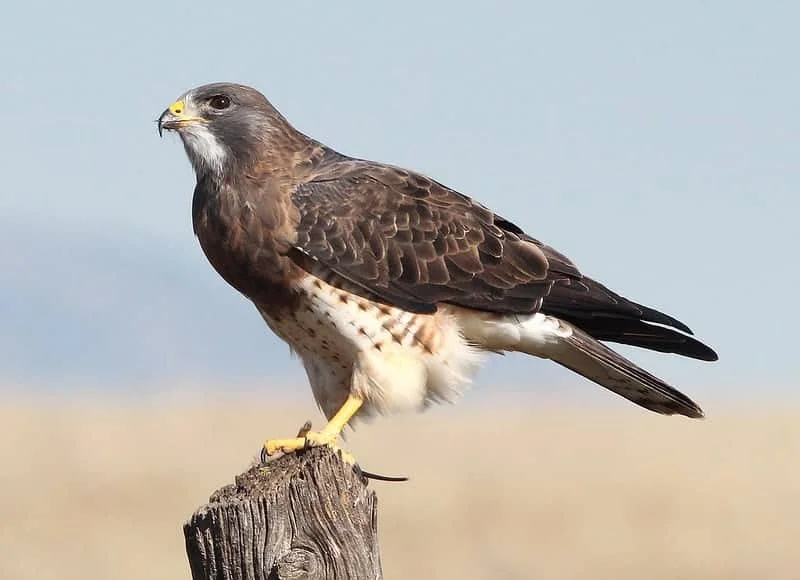
Bruce Lagerquist, XC468974. Accessible at www.xeno-canto.org/468974.
Wingspan
4 feet
Weight
693-1367g
Life Expectancy
16-19 years
Diet
Mammals & Insects
In Nebraska, swainson’s hawks are known for their distinct migratory patterns.
Unlike the solitary nature of other hawks, this raptor will group by the thousands in the fall, and can be seen throughout the state gathering rest as the flocks move southward.
They are residents in the spring and summer in the western and middle parts of Nebraska.
Swainson’s hawks come in off-white (light morph), reddish-brown, and a dark grays or browns (dark morphs) that may appear black at a glance.
These three tones vary in terms of which is dominant on any given Swainson’s hawk, but there is always a combination of at least two.
7. Red-Tailed Hawk
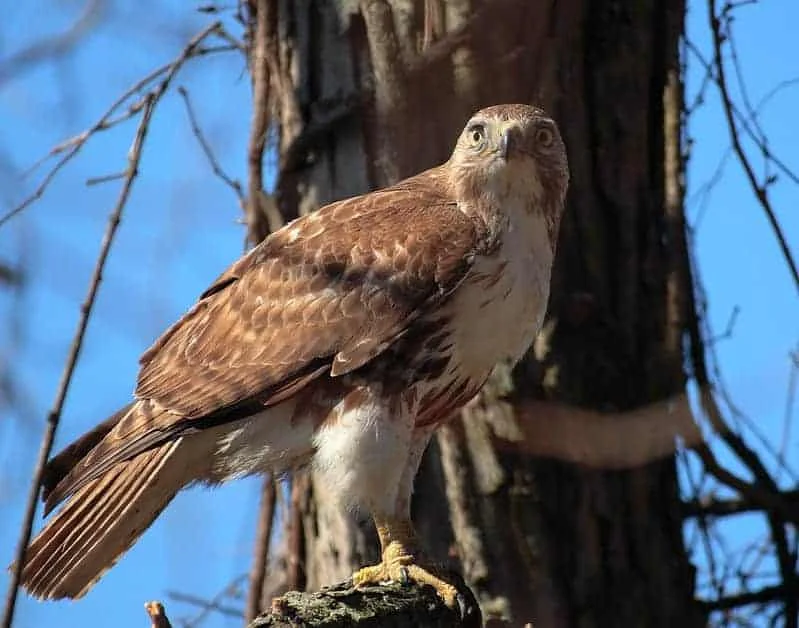
Peter Ward and Ken Hall, XC603736. Accessible at www.xeno-canto.org/603736.
Wingspan
114-133cm
Weight
900-1460g
Life Expectancy
10-15 years
Diet
Small mammals, mice & voles
No matter where you look in America, save for the outlying places like Alaska, chances are you’ll find red-tailed hawks.
Nebraska is no exception, as the raptor can be seen throughout the state, particularly near the North Platte River.
Red-tails are more adaptable to human contact, so they frequent roadsides and communal areas where critters gather food, so they in turn can hunt these animals as they forage.
Red-tailed hawks can be spotted near the edges of forests or in isolated groups of trees, so long as the treetop perch overlooks fertile hunting ground below.
Despite the commonality of the reddish markings on their tails (which may also vary in hue), these hawks are varying shades of brown, from light earth-colors to those so dark as to appear black from a distance.
The best time to spot one is during fall migrations as they move from high ground to low.
8. Rough-Legged Hawk
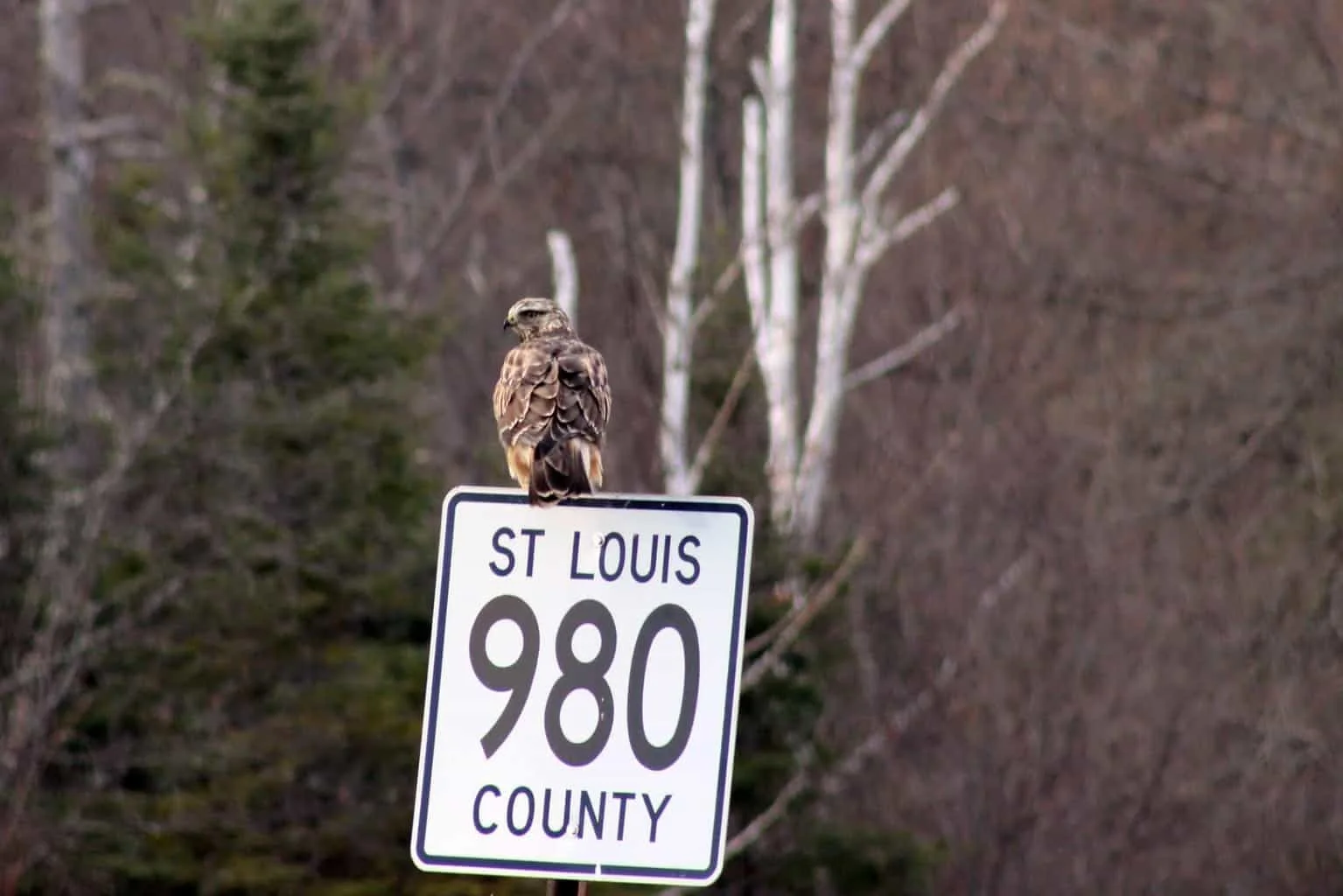
Stein Ø. Nilsen, XC580104. Accessible at www.xeno-canto.org/580104.
Wingspan
132-138cm
Weight
715-1400g
Life Expectancy
Up to 18 years
Diet
Small rodents
These roadside hunters are so named because the feathers at the base of their bodies reach all the way to their talons, giving viewers the impression the bird is wearing ‘roughly sewn pants.
It is another of the more distinctive hawks, with a pale crown, face, and chests that are usually white, grey, or beige checkered with darker shades of the same colors.
Their backs are slightly darker browns and grays in most specimens, but many morphs see the paleness of the chest bleed into the wings and crown. Also, stark patches of dark feathers appear at the base of the back and lower abdomen.
Rough-legged hawks visit Nebraska as migrants from colder climates farther north in the winter, and they may hang around throughout some of the spring.
Like harriers, this is a bird that hovers above its prey instead of staking them from trees, so they are more adaptable to the prairies and grasslands of Nebraska than some others.
Still, you can expect to find them in the usual places–at the edge of forests overlooking flat areas where meals run about, often near water sources where the choice of food is a lot more substantial.
9. Northern Harrier
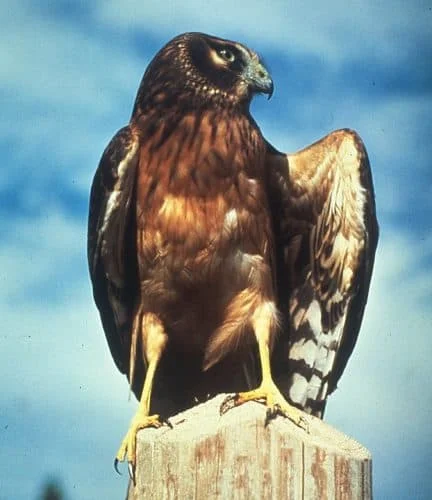
Bruce Lagerquist, XC329772. Accessible at www.xeno-canto.org/329772.
Wingspan
120cm
Weight
390g
Life Expectancy
16 years
Diet
Rodents and small birds
Of the most populous hawks of the U.S. the harrier is among the most suited for prairie living.
It is comfortable in low trees and bushes at ground level for nesting, and since it “harries” its prey rather than stalking it, so no treetop perch is required.
The ‘owl’ of the hawk family can be seen year-round near the state’s water sources, which are usually the riparian grounds that form around rivers and creeks.
Beyond their circular heads and stout bodies, northern harriers also have the owl’s trademark ring of brighter, harder feathers around its face.
Their plumage is usually a mixture of whites, grays, and browns in checkered patterns that cover most of its body.
In Nebraska, northern harriers hang out in areas like the Sandhills, returning to the same hunting grounds each spring and summer to build new nests, and seeking lowland refuge in the winter.

More Articles.
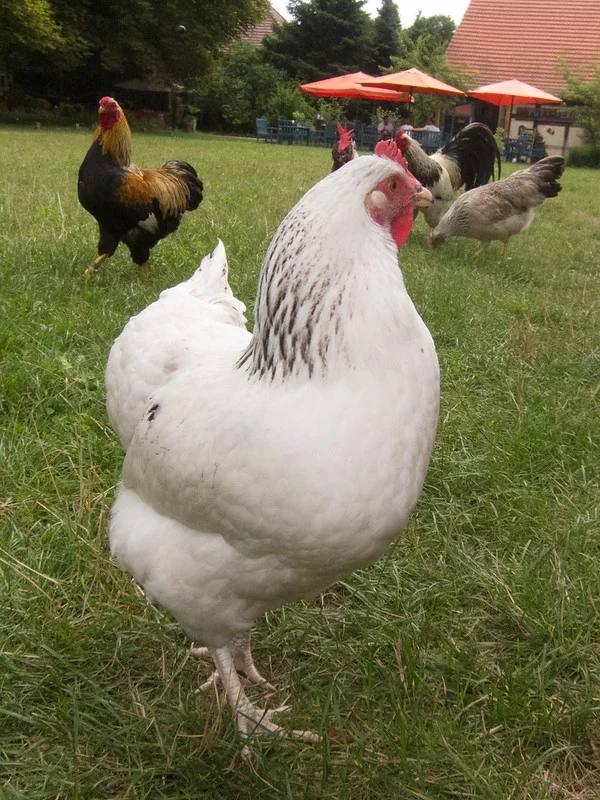
What does it mean to see a White Hen in your dream? (Symbolism & Meaning)
Seeing a Phenoix in your dream can symbolize a fresh start, a new beginning, or
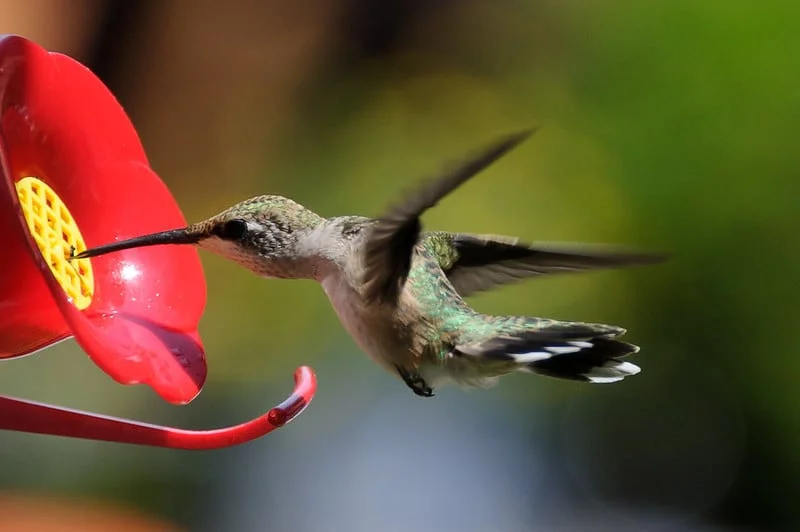
What time of day should you feed hummingbirds?
Hummingbirds are most known to prefer to visit a feeder and flowers as the sun

About Us
We are avid bird-watchers who recently retired, allowing us more time to travel the world. Fortunately, we have managed to visit numerous countries around Europe, Asia, and America. Watching and photographing birds has been a passion for many years and we are making the most of the extra time on our hands!

